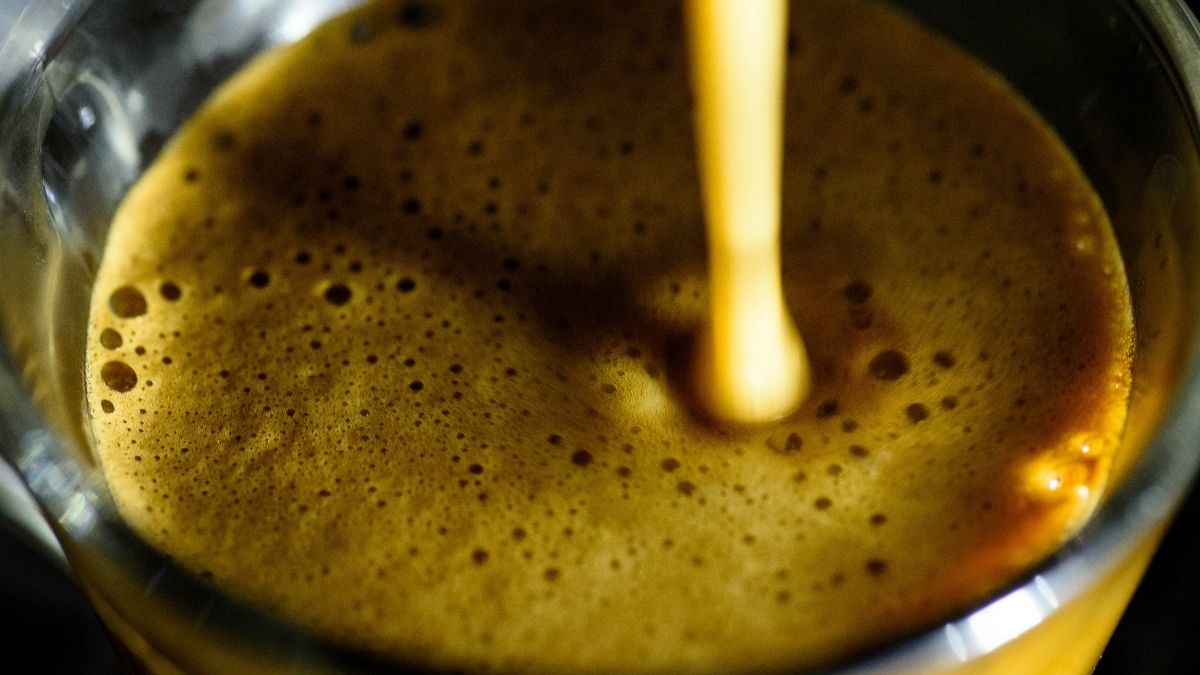Ah, espresso! I can’t remember when was the last time that I didn’t hold one. Espresso is one of my go-to drinks that keeps me active throughout the day.
In its strictest form, espresso is processed without a crema. However, during its brewing time, light brown microbubbles are formed due to its pressured hot water under high temperatures. These bubbles are then attached to the natural fats or oils present in the ground coffee where they show up at the top of your cup of espresso. This is called the natural crema in espresso.
So, if you’re into espresso and are curious about it, we’ve prepared comprehensive pointers about your favorite cuppa!
What Is Espresso?
With attributions from Italy, espresso has been one of the go-to beverages of coffee aficionados around the world. It’s made out of coffee beans but is stronger, thicker, more concentrated, and contains more caffeine than regular coffee. But because it’s mostly used as a base for many coffee beverages, it’s usually served in smaller amounts, which means it has less caffeine per serving.
Using an espresso machine, the boiling water is forced under 190°F temperature through finely-ground coffee beans of any variety. The most common beans used for espresso are Robusta and Arabica, which are widely used in many coffee shops to serve your cup of joe.
Espresso is often credited to Angelo Moriondo who invented the first espresso machine in 1884 that was later improvised and patented by Luigi Bezzera in 1901. Sometime in 1903, Desiderio Pavoni bought the patent and started manufacturing espresso machines in Milan.
Crema On The Espresso
By forcing hot water into the ground coffee through an espresso machine, the result gives a light brown foam on top of the pulled shot of espresso. This is its natural “crema” that’s formed when the coffee’s natural oils and fats are mixed with air bubbles. Coffee lovers sometimes call crema the Guinness Effect because it resembles the top of a good pour Irish stout drink, Guinness.
So, yes, espresso has crema, and if there’s none, very little, or too much crema, we have a problem. Here are some important pointers that you may need to know about crema on the espresso.
- Stale Ground Coffee
- When you use a coffee for espresso that’s been roasted more than weeks ago, it could mean that it’s stale, and can’t produce the natural crema on your espresso.
- If you use coffee that was roasted within 48 hours, you may also have a hard time getting the natural cream on the espresso.
- Use coffee that’s been roasted between 2 and 21 days to get the perfect crema.
- Wrong Grind
- Finely-ground coffee is used to make espresso, but if it’s ground too much, it will gag the espresso machine, which will result in no crema on your pulled shot.
- If the coffee, on the other hand, is too coarse in texture, the water will also run through it very quickly, resulting in under extraction, which means no crema on the shot.
- This also creates a slightly sour taste in your espresso.
- Before pulling a shot, make sure to tamp the coffee grounds to level them in the portafilter.
- Also, make sure that you’re putting in enough coffee depending on how many shots of espresso you’d want to pull. A single shot should be about seven grams of ground coffee and 14 grams for double shots.
- Wrong Water Temperature
- Make sure that your water temperature on the espresso machine is at 190°F to 200°F.
- Wrong Pressure Amount
- The pressure should be at nine to ten bars depending on the espresso machine used to pull the shots.
- Under-Extraction And Over-Extraction
- The typical extraction from an expresso machine should only take between 15 and 30 seconds. This should give you a perfect crema on the shot. At times, it varies depending on the espresso machine used.
- Too Light Or Too Dark Coffee Roast
- When the coffee roast is too light, chances are, your crema goes away in less than a minute. Good extraction and the right coffee roast keeps the crema on top last for up to two minutes.
- Also, a very dark coffee roast won’t also create a good crema on your espresso due to the soluble oils being rubbed off when the beans are processed and packed.
- Automatic Espresso Machine
- Most espresso machines that are intended for home use have automatic controls, which can hurdle the formation of natural crema on the espresso.
- Manually pulled shots of espresso, which are used by coffee shops give the best crema on top.
Pro Tip: Coffee beans that are naturally processed give the best and perfect crema on the espresso. This is due to the oils retained in the coffee when being brewed in the espresso machine.
How Important Is Crema?
Well, yes, it’s important, but not that much. Let me explain this clearly.
Espresso crema is really important when it comes to pulling the shots. Crema helps trap and keep the nutrients as well as the minerals formed in the cup of espresso. This creates the best espresso that you can have.
However, on the other hand, having the perfect crema on your espresso isn’t as critical as you expected it to be. Although it does add a richer flavor to your cup, it doesn’t change the fact that you can still have a great espresso without a perfect crema.
An espresso can still give you a tasty flavor even with the absence of crema. Remember, face value doesn’t really matter at all times. It’s the inside of it that matters. Yes, I’m talking about a flavorful cup of espresso with or without crema.
Pro Tip: Clean your espresso machine regularly, especially before pulling the shots. Any bacteria trapped inside will give you a bad flavor of espresso.
Top Espresso-Based Beverages
Espresso, as delicious as it can be, with or without crema is one if not the best base of any beverages that one can produce. So, if you’re on the lookout for the best espresso-based drinks, you’re in the right place. We have personally picked these beverages that we think are the top choice of any coffee lover out there.
Macchiato
This is typically served in a 35 to 40 ml cup with a shot of espresso, and a small amount of steamed or foamed milk. It’s sometimes called espresso macchiato, meaning “stained” or “marked” coffee.
Cappuccino
It’s one of the most popular espresso-based drinks worldwide that originated in Austria with developments that took place in Italy. It’s served with equal distribution of steamed milk, foamed milk, and espresso.
Caffe Latte
Caffe latte literally means coffee and milk in Italian. It’s prepared with steamed milk and one or two shots of espresso.
Flat White
A flat white is almost similar to a latte although it’s a little smaller in volume with less microfoam. This allows the shot of espresso to dominate the flavor with little milk in the background.
Cortado
In Spain, cafe cortado is simply an espresso with a dash of warm steamed milk. It’s similar to caffe macchiato in Italy.
Americano
Americano is literally an espresso diluted with hot water similar to brewed coffee but with a different flavor and strength.
Mocha
Also called mochaccino, the name mocha originated from Mocha, Yemen, where one of the earliest coffee trades took place. This is served with a shot of espresso, chocolate flavoring such as cocoa powder, and steamed milk. Other variations may also include whipped cream on top of it.
Ristretto
This is a short shot of espresso or a single shot that you can see in small cups, but it’s more highly concentrated and extracted with a finer grind.
Red Eye
Red-eye coffee is a drip coffee with one or two shots of espresso. Its name is often associated with a red-eye flight, which happens overnight that causes the passenger to have red, tired eyes. So, yes, you may have this when you’re hopping on an overnight flight.
How Healthy Is Espresso?
Coffee, in its strictest sense, is healthy. So does the espresso because obviously, it’s made from coffee beans that give health benefits as long as you don’t overindulge in it. It’s a great source of antioxidants that help boost your immune system.
Drinking coffee also helps reduce the risk of neurodegenerative diseases such as Alzheimer’s, dementia, and Parkinson’s. But don’t take too much caffeine. According to the FDA, a healthy adult can take up to 400 mg of caffeine a day, which is equivalent to four or five cups of joe.
Endnotes
Crema plays an important role in having the best cup of espresso, but it doesn’t mean it’s critical to have it in your cup. The kind or type of coffee beans used, the espresso machine, and the way it’s processed are also big factors in having a crema. And it’s important that you know the science behind it, which we have covered above.

